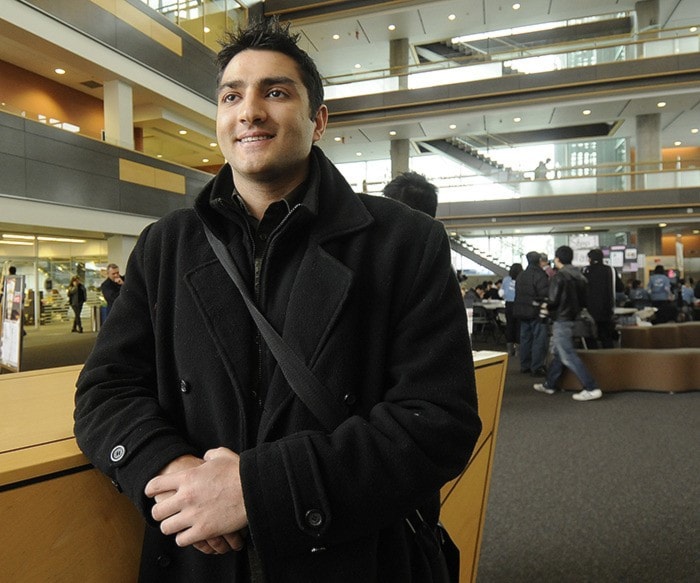Volunteers at SFU Surrey were on the lookout for hidden heroes Wednesday morning – members of the public who unbeknownst to them, have the power within them to save someone's life.
Members of OneMatch Stem Cell and Marrow Network and OtherHalf Chinese Stem Cell Initiative spent the day educating students and the public about the need for more stem cells donors.
Stem cells are the building blocks of cells and are capable of developing into any of the different types of cells present in a person's bloodstream.
A transplant of healthy stem cells helps those suffering from diseases – such as cancer and immune system disorders – whose blood is unable to produce its own stem cells.
Canadian Blood Services runs the nation's stem cell matching service (OneMatch Stem Cell and Marrow Network) which links possible donors with recipients.
With nearly 75 per cent of registered donors coming from the Caucasian community, the two SFU groups were in Surrey to help target the Asian and South Asian communities with the hope of increasing ethnic donor numbers.
SFU student Alex Hayer knows all too well the value of a stem cell donor.
A few weeks after his 19th birthday, Hayer felt very rundown and tired.
"I thought it was my heavy workload at school," said the tall South Asian student currently finishing his master's degree in public health.
"Then I started getting eight-hour nosebleeds."
The doctors initially thought he had a virus and sent him home, but a few weeks later, after having more tests, he was informed he had acute late-stage leukemia. His chance of survival was estimated at between 15 and 20 per cent.
Hayer started chemotherapy immediately, but his only hope for survival was to find a suitable stem cell donor.
After everyone in his family was tested, (including his father, Surrey-Tynehead MLA Dave Hayer), his sister Sonia proved to be a perfect match.
Hayer spent a month in hospital undergoing treatment and still has follow-up tests every few months, but so far, the leukemia in gone.
"If it wasn't for stem cell research, I would be dead right now," said Hayer, 29.
"Events like this are so important, to get the knowledge out, to show people how easy it is, how you can change people's lives."
 Satgur Singh Rehal (left) didn't hesitate when he was asked to sign on to the registry.
Satgur Singh Rehal (left) didn't hesitate when he was asked to sign on to the registry.
"I think I can help saves lives," said the 19-year-old SFU Mechatronics student.
"If you can do something for another person, that's what you should do. That's what my mother always taught me."
Both OneMatch and OtherHalf are currently targeting ethnic males in the 17-35 age category.
At SFU, potential donors were asked fill out a consent form and submit to a cheek swab, where a cotton swab is used to take a small amount of cell tissue from the donor's mouth to find the Human Leukocyte Antigen (HLA) typing. That information is then stored in a database for patient searches.
According to Canadian Blood Services, the most likely family members to match a patient will be the siblings. However, there is only a 30-per-cent chance of finding a matching donor in a patient's family, so the majority must rely on a donor from the OneMatch Stem Cell and Marrow Network to help. Today, nearly 1,000 Canadians are waiting for a stem cell match from an unrelated donor.
Research has advanced to a point where almost all stem cell donations are performed in a similar fashion to a blood donation. Donors give a blood sample, the stem cells are removed from the sample, and the remaining blood is put back in the donor's body.
Learn more:
• A second community stem cell registry drive is being held at SFU's Surrey campus (Central City Complex, 13450 102 Ave.) on Monday, Feb. 25 from 1:30- 4:30 p.m.
• More information about the process and the stem cell registry is available at: www.blood.ca
